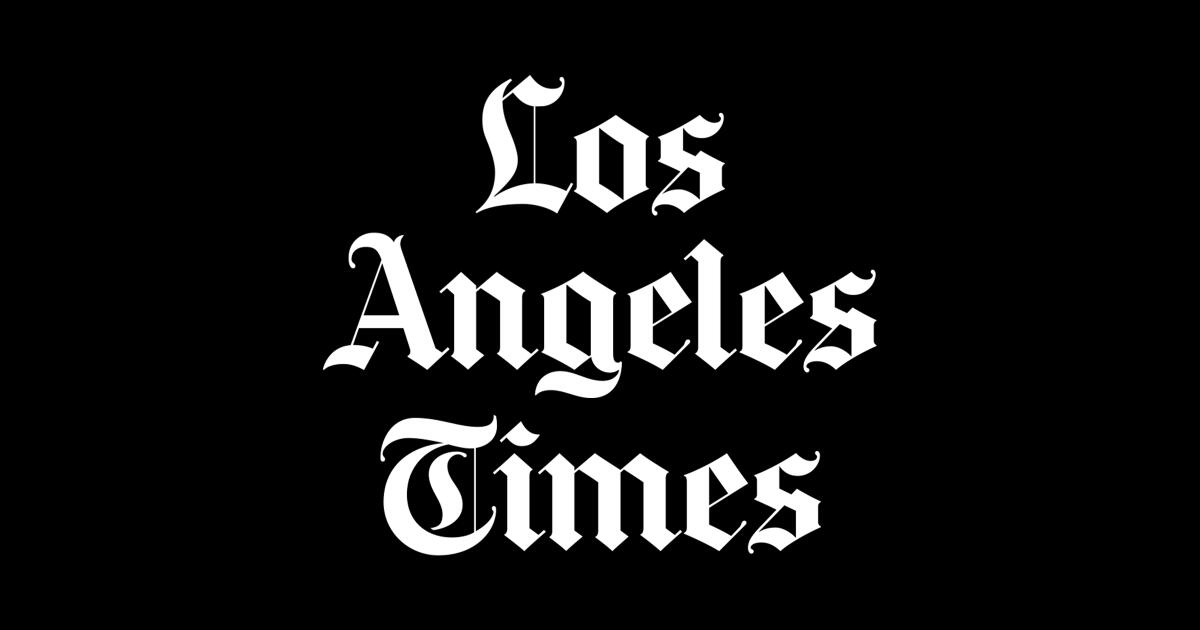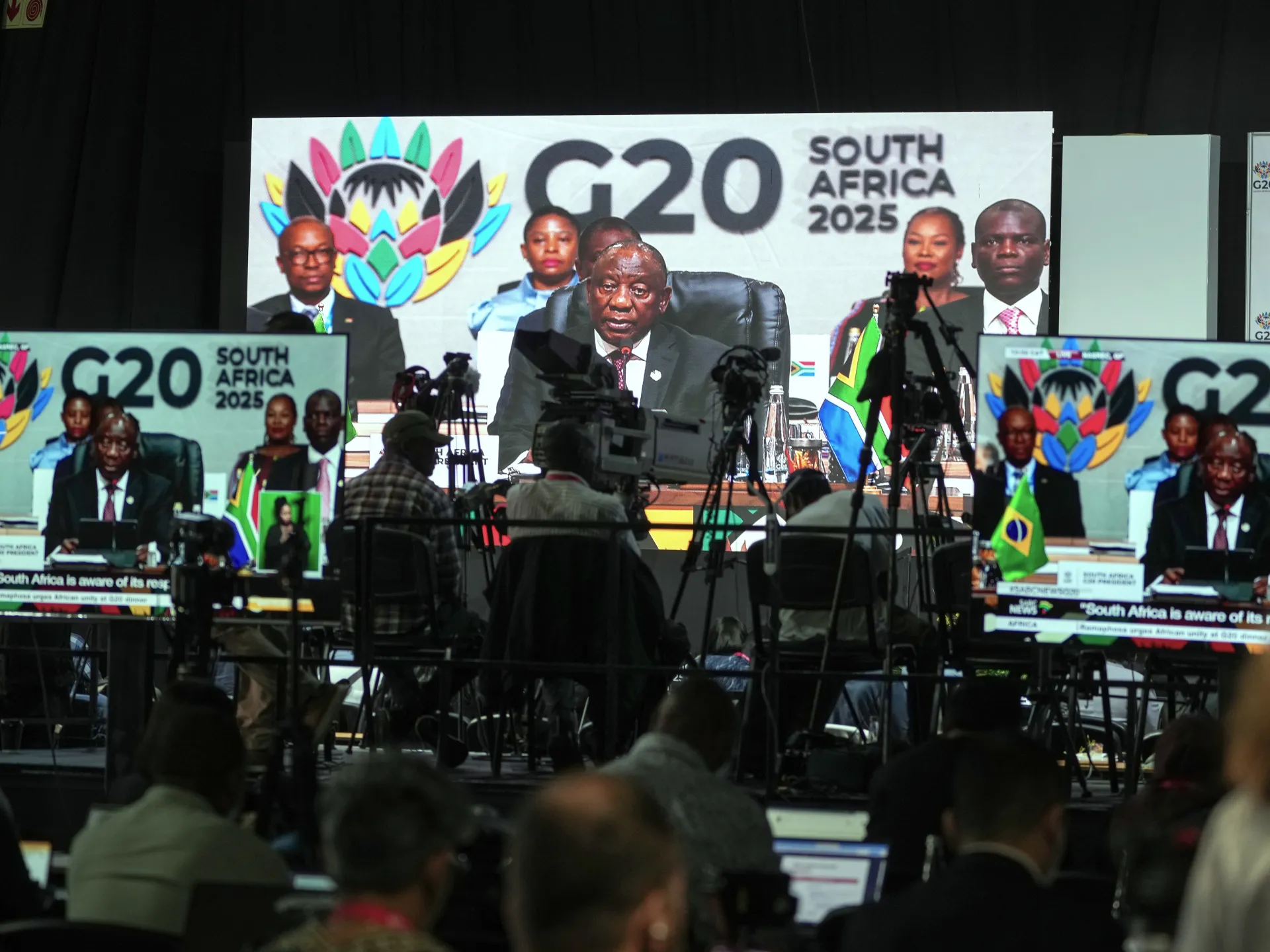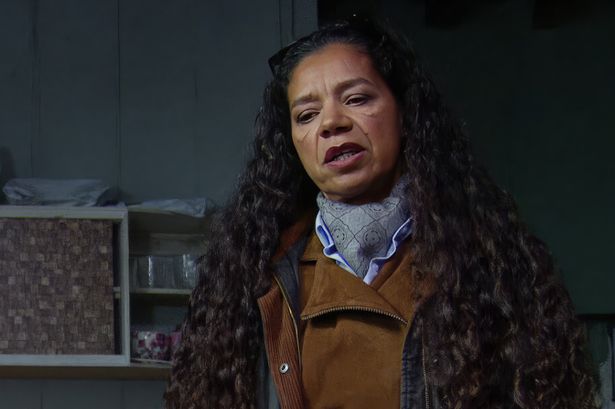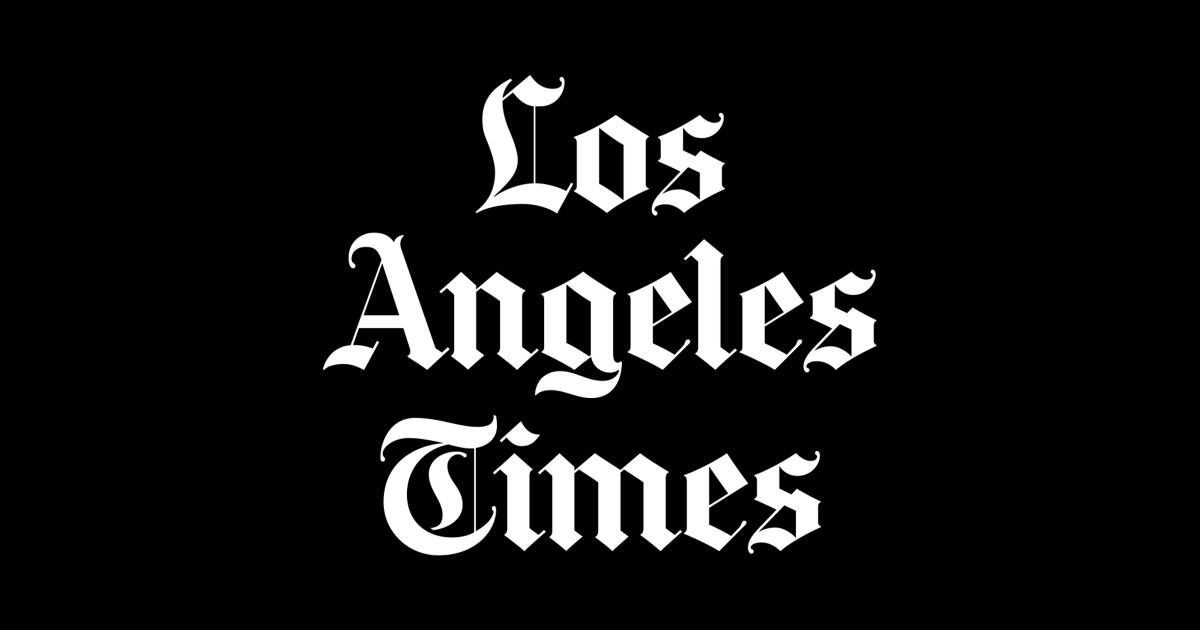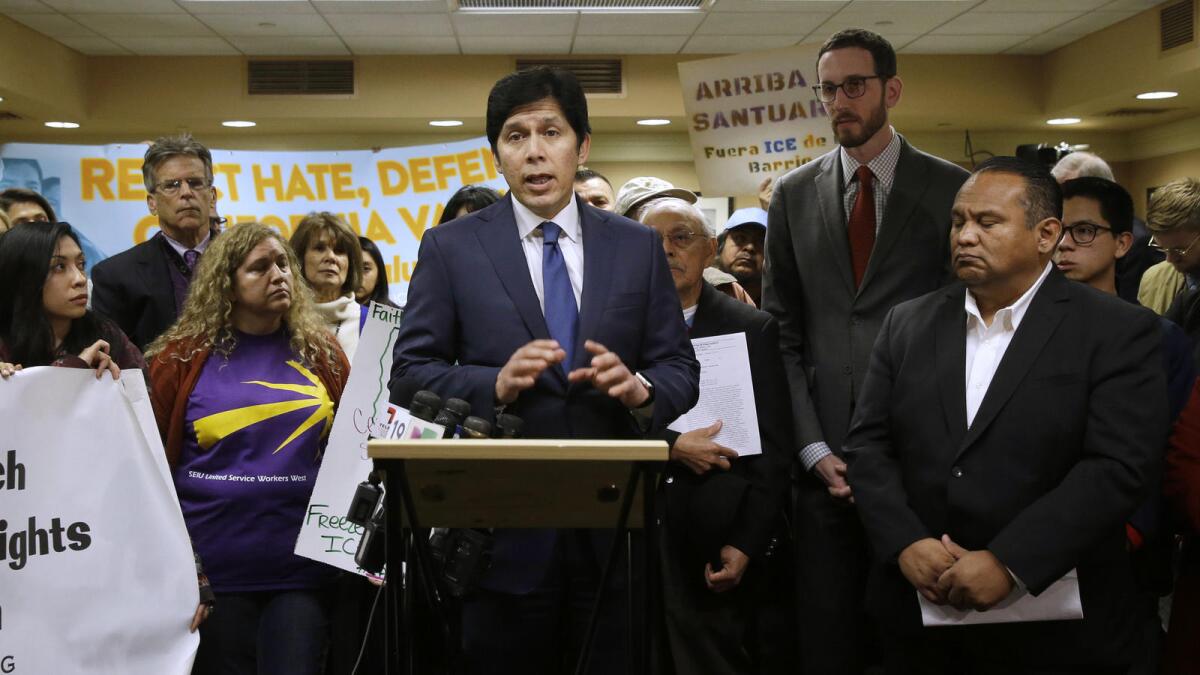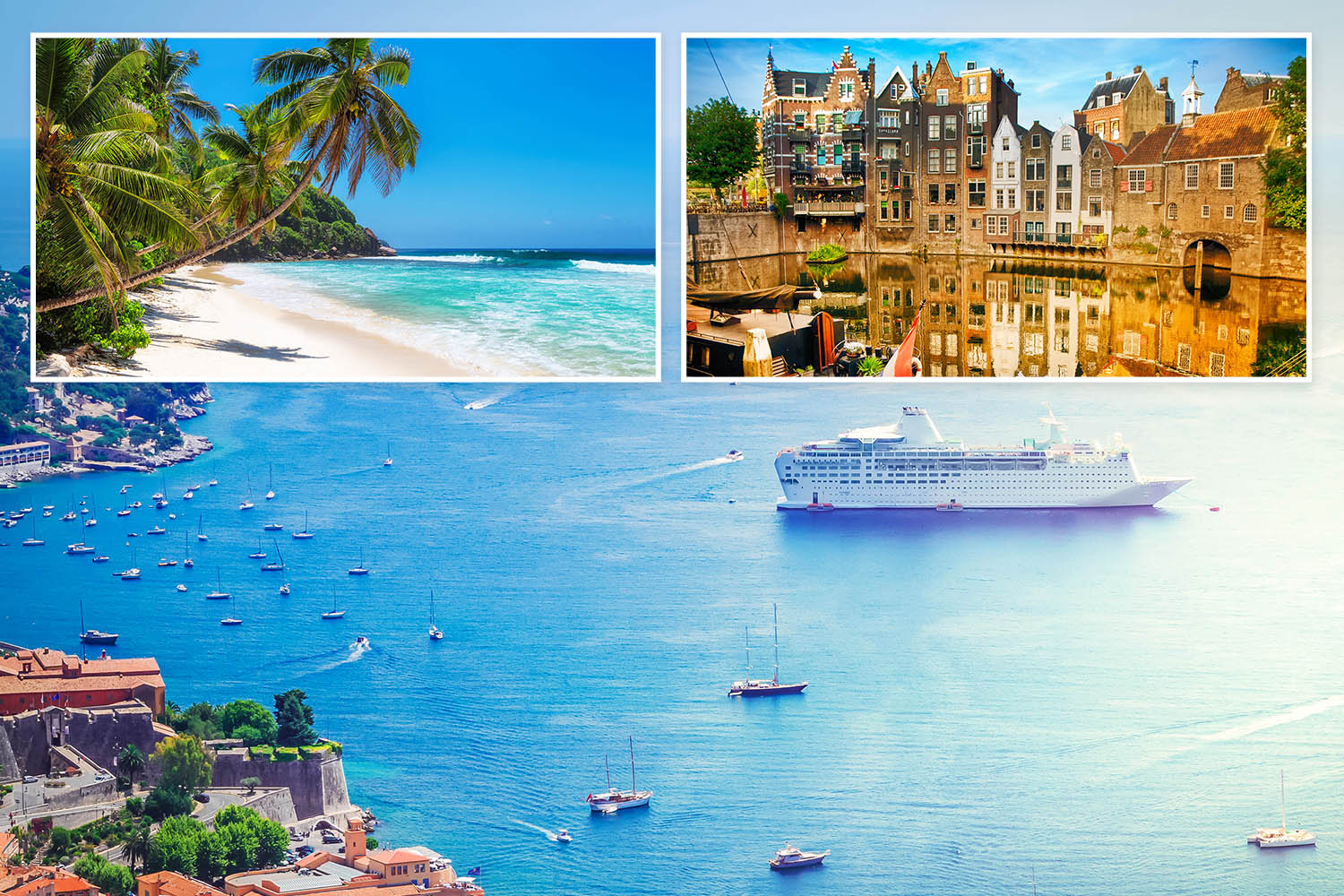Rodney Rice powers USC to win over Boise State at Maui Invitational
LAHAINA, Hawaii — Rodney Rice scored a season-high 27 points and Chad Baker-Mazara had 11 points and eight rebounds as USC beat Boise State 70-67 on Monday in the Southwest Maui Invitational.
USC (5-0) will play on Tuesday against Seton Hall, which beat North Carolina State earlier.
Rice split two defenders at the top of the key to get into the paint for a runner while being fouled with 14.8 seconds left in the game. He made the basket and free throw to give USC the lead at 68-65.
After the teams traded free throws, Boise State inbounded it with 4.2 seconds left and quickly got down the court for Javan Buchanan’s good look from three-point range that came up just short at the buzzer.
Rice made four of USC’s 11 three-pointers, while Boise State went five for 25.
Buchanan led Boise State (4-2) with 18 points. Pearson Carmichael added 14 points and Aginaldo Neto 10.
Boise State trailed for 25-plus minutes, with its last lead at 59-58 at 2:57.

Illinois police capture ‘Slender Man’ attacker after leaving group home
Nov. 24 (UPI) — Police in Illinois said they captured Morgan Geyser, one of the two people who pleaded guilty to stabbing a friend to appease an imaginary creature called Slender Man, 165 miles from the Wisconsin group home where she was staying.
Geyser, 23, allegedly cut off her monitoring bracelet Saturday night before leaving the residence in Madison and meeting up with an acquaintance.
In an incident report, Madison police said the Department of Corrections received an alert around 9:30 p.m. Saturday that Geyser’s GPS monitoring bracelet was malfunctioning. Around 11:35 p.m., group home staff informed DOC that Geyser was not at the home and she had removed her GPS bracelet.
On Sunday night, police in Posen, Ill., a suburb south of Chicago, told ABC News that law enforcement officials took her into custody. Madison police confirmed her capture to CNN.
Madison police said they received confirmation at 10:34 p.m. Sunday that Geyser had been taken into custody in Illinois.
The Posen police said officers found Geyser at a truck stop with another person, identified as a 42-year-old man, who was arrested on charges of criminal trespassing and obstructing identification, WBBM-TV in Chicago reported.
Geyser is scheduled for an extradition hearing on Tuesday in Chicago. She is not facing any charges in Illinois.
Geyser and the friend were found at a truck after police received reports of two people loitering behind the building. They were sleeping on the sidewalk.
Initially, Geyser gave police a false name. She then told police she didn’t want to give her name because she had “done something really bad,” and officers could “just Google” her.
The friend told WBBM-TV she didn’t want Geyser to be alone after Geyser left the group.
They took a bus and then walked to the truck stop.
Geyser and Anissa Weier pleaded guilty to the 2014 stabbing of their friend, Payton Leutner, when all three girls were 12. Geyser and Weier lured Leutner into the woods where they stabbed her 19 times. They told police a creature known as Slender Man threatened their lives and the lives of their families if they didn’t kill Leutner, who survived the attack.
Geyser and Weier were charged with attempted second-degree murder in 2017 but were found not guilty by reason of mental defect.
Waukesha County Circuit Judge Michael Bohren committed them to a psychiatric hospital for 40 years.
Psychiatrists diagnosed Geyser with schizophrenia and she was released to a group home this year.
A spokesperson for the Leutner family released a statement saying they were aware of Geyser’s disappearance.
“Payton and her family are safe and are working closely with local law enforcement to ensure their continued safety,” a statement said.
“The family would like to thank all of the law enforcement entities involved in the efforts to apprehend Morgan.”
A19 Tyne and Wear closure LIVE: Major route closed in both directions after 'serious collision'

National Highways said the road closure is expected to be in place for several hours as an investigation is carried out – the nature of any injuries has not yet been disclosed
Source link
The costs of the Philippines’ lost decades
Recently, former National Economic and Development Authority (NEDA) director general Karl Kendrick Chua said that the Philippines is standing at a “critical juncture” that could determine whether the country finally attains sustained high growth or once again falls into a cycle of lost opportunities.
Speaking during a Makati Business Club briefing, Chua, who now serves as a managing director at Ayala Corp., noted that depending on the policy crafted, the results have been varied. “You have years where the critical juncture led to economic recession or depression. There are years where it led to economic growth,” he added.
The current economic position of the Philippines is the effect of several critical junctures where policy choices either accelerated or derailed long-term development. For example, Chua noted that if the country had avoided the 1983 debt crisis and the 1997–2003 fiscal crisis, per capita income today could have matched or even exceeded Thailand’s. “These crises wiped out decades of growth,” Chua said.
To understand the magnitudes involved, it is instructive to go beyond these remarks. So, let’s take a closer look at these past losses and the more recent ones.
Debt, fiscal and corruption crises
Starting in 1983, the debt crisis penalized the Philippine GDP for a decade.
Let’s assume that the economic trends that had prevailed prior to the crisis would have prevailed without a crisis. In this view, it was only after the early 1990s, that the Philippines GDP first got to level where it had first been 10 years before. In economic terms, the debt crisis was a lost decade.
Adding the cumulative losses, it cost the economy over $152 billion.
What about the fiscal crisis?
Starting in the mid-1990s, this crisis penalized the GDP until 2011. Again, let’s assume that the economic trend that had prevailed before the fiscal crisis would have prevailed without a crisis. In this view, it was only in the early 2010s that the Philippines GDP got to the level where it had first been almost two decades before.
Adding the cumulative losses, it cost the economy over $630 billion – over four times more than the prior crisis.
Although flood-control corruption is an old challenge, the present crisis associated with it – assuming the critics are right – moved to a new level after 2022. In that case, assuming the present trends prevail, it could penalize the GDP by more than $191 billion by 2028.
Notice that in the case of the debt and fiscal crises, we have historical economic data that allows us to test counterfactuals. Whereas in the case of the flood-control corruption, we are comparing economic performances in the Duterte years (2016-2022) and in the projected Marcos Jr. years (2022-28), in order to assess the economic value of missed opportunities.


The Costs of Three Crises. GDP, current prices; in billions of U.S. dollars. Source: IMF/WEO, author
Losses of almost $1 trillion in four decades
In a current project, I am examining the economic development of most world economies from the 19th century up to 2050. The kind of losses that the Philippines has suffered are typical to conflict-prone nations, but somewhat unique in countries that should benefit from peacetime conditions.
The lost opportunities and economic value associated with these crises indicate that in the past 45 years or so, the Philippine GDP has under-performed far more often than it has engaged in more optimal growth.
That translates to missed opportunities of massive magnitude, in light of the size of the economy. All things considered, these losses could amount to more than $970 billion.
Overcoming misguided and self-interested economic policies that serve the few at the expense of the many is vital in a nation, where poverty and food security is the nightmare of every second household.
Pressing need for development and smart diplomacy
According to public surveys, the national priority issues are topped by the need to control the rise in prices of basic goods and services (48%) and fighting corruption (31%). Other major concerns are also domestic featuring affordable food (31%), improving wages (27%), and reducing poverty (23%).
These are all pressing domestic, bread-and-butter issues. And yet, although foreign policy issues represent a fraction in popular national priorities, much of the country’s policy attention and resources have been allocated to precisely such priorities.
Of course, the country should insist on its national interest, but that interest should be defined by the needs of the many, not by the priorities of the few. And that should mean focus on inflation control, corruption, food security, rising wages and poverty reduction.
Most Southeast Asian nations have elevated their economic fortunes by accelerated economic development and smart regional diplomacy. There is no reason why the Philippines couldn’t or shouldn’t do the same.
Most Filipinos would certainly agree.
*Author’s note: The original version was published by The Manila Times on November 24, 2025
Latin musician, 22, killed in ambush-style shooting in Northridge
A 22-year-old influencer and Latin musician was killed in an ambush-style shooting in Northridge in the early hours of Saturday morning, authorities said.
Maria de la Rosa was fatally shot when multiple rounds were fired at several people sitting in a car parked on Bryant Street near Tampa Avenue, according to the Los Angeles Police Department.
Witnesses described seeing two men approach the vehicle around 1:25 a.m. Saturday, police said. De la Rosa was transported to a hospital, where she succumbed to her injuries.
No further information was available on the suspects or whether the others inside the car were wounded.
De la Rosa released her first song, “No me llames” (“Don’t Call Me”) in August under the name DELAROSA. The most recent post on her Instagram account, which has more than 40,000 followers, shows her with an electric guitar in a recording studio and is captioned “Ocupada cocinando en el Stu,” meaning “Busy cooking in the Stu[dio],” alluding to the upcoming release of more music.
Many people left messages expressing grief for the loss of the young performer in the comments, including several figures in the Latin music community such as music producer Jimmy Humilde and Juan Moises, the lead singer of Los Gemelos de Sinaloa.
In a message in Spanish, music producer and engineer Times J Martinez wrote that she was a young and talented musician.
“Me duele que alla sido con violencia,” he wrote, or “It hurts that it happened with violence.”
The motive for De la Rosa’s shooting is unknown, and so far no arrests have been made, police said. Anyone with information is asked to contact Valley Bureau homicide detectives at (818) 374-9550. Anonymous tips can be left at (800) 222-8477 or at the Crime Stoppers website.
WorldCom Puts Him in the Spotlight
OKLAHOMA CITY — Speaking in measured tones in his cluttered ground-floor office, state Atty. Gen. William “Drew” Edmondson doesn’t sound like someone itching to take on the political establishment in Washington.
His background doesn’t suggest it, either. His grandfather was a county commissioner. His father was a congressman. His uncle was the youngest governor in Oklahoma history and later served in the U.S. Senate. Edmondson’s own career is a study in calculated political ascension, from the Oklahoma Legislature to Muskogee County district attorney to an unprecedented third term as the state’s highest law enforcement official.
This week, he took a radical turn for someone who has long followed political conventions, and hijacked a high-profile federal investigation into one of the country’s biggest corporate accounting scandals.
By filing the first criminal charges Wednesday against telecommunications giant WorldCom Inc. and its deposed chief executive, Bernard J. Ebbers, Edmondson single-handedly threw into doubt the work of Justice Department prosecutors who want to punish the people responsible for understating expenses by $11 billion.
He also garnered more media attention in a single day than he did during the two years he worked on the $200-billion settlement with U.S. tobacco firms.
The securities fraud charges are among the first by a state against Wall Street’s most wanted, the men who ran WorldCom, Enron Corp. and other firms felled by accounting scandals. New York has charged some former executives of Tyco International Ltd., and federal authorities filed a civil action against the company.
Ashburn, Va.-based WorldCom pledged to cooperate with Oklahoma authorities.
U.S. prosecutors, who have charged five of Ebbers’ underlings and won four guilty pleas, are furious that the Oklahoma case might jeopardize their prosecutions. In addition to Ebbers, Edmondson charged the four who are cooperating with the federal government, and they might be afraid to testify about their illegal activity in a federal trial, fearing they would bolster the state case against them.
Some financial commentators and political opponents portray Edmondson as an ambitious bumpkin — or worse, a public official doing the bidding of a campaign contributor, SBC Communications Inc., a phone company looking to keep rival WorldCom mired in bankruptcy.
Many others, including some of Edmondson’s courtroom foes, defend him as a fair, thoughtful and straightforward man who was simply unable to sit tight in the face of massive fraud at WorldCom and what he saw as the foot-dragging of federal investigators.
“He’s not a wild and crazy guy,” said Andy Coates, dean of the University of Oklahoma’s law school. “He’s very sound in his judgments.”
Edmondson, a 56-year-old Democrat with a teaching degree who has the look and demeanor of a high school guidance counselor, says he came to his decision gradually, after studying WorldCom with officials from California and other states who are now cheering his prosecution from the sidelines.
“He’s not your average elected official,” said Washington state Atty. Gen. Christine Gregoire, who led Edmondson and half a dozen other state attorneys general in the tobacco settlement talks. “He’s an individual who will always do what he considers to be the right things, no matter the personal or political consequences.”
Edmondson’s interest in public service goes back to his childhood, when he attended “political meetings and bean-dip dinners” with his father, he recalled in an interview.
“My brothers would go out of family obligation,” he said, “but I actually enjoyed it.”
His trust in government — especially the federal government — began to erode during the Vietnam War, when he served in the Navy and ferried secret messages to commanders on an air base. Reading that traffic, he said, “it became obvious we were in places where we said we weren’t.”
That “was one of a number of life circumstances that make me not trust immediately what we get told by the government.”
As attorney general, Edmondson has often argued against federal intervention into state matters. In 2000, he filed a friend-of-the-court brief supporting New Jersey’s attempt to stop the Boy Scouts of America from discriminating against gay troop leaders — a position that didn’t endear him to his socially conservative constituents.
Edmondson has scored political points with his ardent and effective support of the death penalty, which is popular in the state. After the bombing of the city’s federal building that killed 168 people, he helped push a law through Congress that streamlined the lengthy appeals process in death row cases.
Oklahoma now executes more criminals per capita than any other state, according to the Death Penalty Information Center in Washington. Unlike his counterparts in some other states, however, Edmondson voluntarily authorizes DNA testing of convicts at state expense when there is a real question of guilt.
“Edmondson handles his position in a professional manner,” said Oklahoma County’s chief public defender, Bob Ravitz. “He’s not in any way vindictive.”
Nor, Edmondson said, does he use his position to protect his friends and allies. “I’m the guy who, as district attorney, raided my own Veterans of Foreign Wars lodge because it was engaged in illegal gambling.”
He said he put a mayor and district attorney — both friends and financial supporters — behind bars for corruption. He worked with the Federal Trade Commission to put two of his major campaign contributors out of business for making misrepresentations in violation of telemarketing rules.
“Friendship is one thing,” Edmondson said. “Breaking the law is something else.”
He and his wife, Linda, a medical social worker, have two adult children, one a lawyer and the other an anthropologist. A niece is serving a 35-year prison sentence for an infamous crime spree inspired by the movie “Natural Born Killers.” Edmondson said the personal trauma had not changed his view of the criminal justice system.
In the WorldCom case, Edmondson was initially troubled by the enormity of the misdeeds. For three years, the firm reported profit when it had none. Investors, including Oklahoma’s state pension fund, lost more than $200 billion when the company filed for the record bankruptcy protection it hopes to emerge from this fall.
Edmondson and officials from three other states complained when WorldCom’s bankruptcy plan showed the company wiping out most of its potential criminal penalties in its reorganization.
Then there was the headline-grabbing $750-million settlement with the Securities and Exchange Commission. By Edmondson’s calculations, $250 million of that amount will be paid in stock and $300 million comes from an IRS refund WorldCom received for paying taxes on nonexistent profit. At the same time, the company is collecting $772 million in federal contracts.
“That’s what drove me over the edge,” he said.
Edmondson feared that waiting for federal criminal charges would allow the company to escape punishment. In other cases, he said he had put his own investigations on hold at the Justice Department’s request, then learned that its cases fizzled only after Oklahoma’s statute of limitations had expired.
“The United States attorneys are not necessarily the speediest vehicles on the street,” Edmondson said. Why run the risk with Ebbers, he reasoned, when “we’re confident that we can convict him, and we’re confident that he’s guilty.”
Edmondson’s critics say there’s another factor at work: the attorney general’s friendship with SBC lobbyist Mike Turpen.
The two men go back more than 20 years, to when Turpen was district attorney in Muskogee County and Edmondson was one of his deputies. Outside of work, Edmondson directed Turpen in a local theater performance of “Arsenic and Old Lace.” Turpen, a former state attorney general, is one of Edmondson’s largest fund-raisers.
San Antonio-based SBC is among a handful of phone companies mounting an aggressive lobbying campaign to prevent WorldCom from emerging from bankruptcy protection with the competitive advantage of much less debt. Edmondson happens to agree, saying his sense of fair play is offended by the prospect that WorldCom could end up “stronger than other companies out there that have not broken the law.”
But he bristles when asked about Turpen. Yes, they discussed WorldCom’s bankruptcy advantage. But he insists his friend didn’t have any undue influence on his thinking.
Turpen told a Tulsa, Okla., radio station Friday that “when it comes to decisions like this … nobody tells Drew Edmondson what to do and how to do it,” according to Associated Press.
Personal connections to people with a stake in law enforcement are to some extent unavoidable in a state with just 3 million residents. In the Oklahoma capital, where the seat of government stands across from blanched grass under an oil well, passersby nod to strangers on the street.
But even small states can make a difference in white-collar prosecutions. If Edmondson wins criminal convictions against Ebbers and other WorldCom executives, other states may be emboldened to follow suit — with or without the blessing of the Justice Department.
For the time being, though, officials in other states will wait and see how Edmondson does.
“I hope that serious punishment is forthcoming” for WorldCom, California Atty. Gen. Bill Lockyer said.
Edmondson professes not to care about whether his actions this week will initiate a trend.
“It’s an interesting question,” he said. “But it doesn’t matter to me.”
Man Utd 0-1 Everton: Ruben Amorim says his side are nowhere near the level they should be
Everton’s last visit to Old Trafford triggered Ruben Amorim’s infamous ‘the storm is coming statement’ even though his Manchester United side won 4-0.
Twelve months on, their visit brought more words of caution from Amorim about his side’s evolution that proved equally perceptive.
From a United perspective, the jaw-dropping clash between Idrissa Gueye and Michael Keane can be forgotten beyond the knowledge it left them facing 10 men for 77 minutes.
What followed backed up Amorim’s pre-game view his side is “far from perfection”.
For 77 minutes the United head coach watched his players toil.
He watched young defenders Patrick Dorgu and Leny Yoro needlessly give the ball away under no pressure as the home side were building attacking momentum.
He watched Amad Diallo take the wrong option as he tried to cause a nuisance, first as a number 10 replacement for Matheus Cunha – who was badly missed due to the injury that initially forced him to forgo switching on Altrincham’s Christmas lights on Saturday evening.
He watched as the normally reliable Bryan Mbeumo and Bruno Fernandes failed to execute correctly as chances went begging.
He watched as Joshua Zirkzee, given his first start of the season, and Kobbie Mainoo, given an extended run as a second-half replacement for Casemiro, failed to press their claims for more game time as is being demanded to maintain their respective World Cup hopes.
He also watched as goalkeeper Senne Lammens made a questionable attempt to save Kiernan Dewsbury-Hall’s first-half effort that ultimately proved decisive.
Zirkzee did force Jordan Pickford into a full length save with a header near the end.
But there was nothing more.
As Amorim said on Friday, what had been a five-match unbeaten run could quickly turn into a three-game one without a win with a trip to Crystal Palace to follow on Sunday.
“I know which point we are in,” he said. “I have that feeling during this run. I always talk about that.
“We are not there, not even near the point we should be to fight for the best positions in the league.
“We have a lot to do and we need to be perfect to win games. We were not perfect today.”
It is worth recapping United’s last three games.
At both Nottingham Forest and Tottenham, they led. If they had maintained the advantage, United would have been second in the ‘as it stands’ table. On both occasions, they failed the test and actually needed late equalisers to salvage anything after falling behind.
This time round, completing the Premier League match round, United knew a win would take them fifth. If they had matched last season’s result, it would have lifted them to fourth.
G20 fails to deliver on sovereign debt distress | Debt News
Heads of state from the world’s most powerful countries gathered in Johannesburg, South Africa, over the weekend for a summit that had been billed, under South Africa’s G20 presidency, as a turning point for addressing debt distress across the Global South.
South African President Cyril Ramaphosa had consistently framed the issue as central to his agenda, arguing that spiralling repayment costs have left governments, particularly in Africa, with little room to fund essential services like healthcare and education.
Recommended Stories
list of 4 itemsend of list
But despite repeated pledges – including in the leaders’ summit declaration to “strengthen the implementation of the G20 Common Framework” – South Africa did not deliver any new proposals for easing fiscal constraints in indebted nations.
Hopes that world leaders would use the G20 summit to tackle sovereign debt distress were further dashed when United States President Donald Trump, at odds with South Africa over domestic policies, skipped the meeting altogether amid Washington’s retreat from multilateralism.
The summit also marked the close of a brief period of Global South leadership in the G20, following presidencies held by Indonesia in 2022, India in 2023, and Brazil in 2024. The US is set to assume the G20 presidency on December 1.
Debt ‘vulnerabilities’
The G20 – which consists of 19 advanced and emerging economies, the European Union and the African Union – represents 85 percent of global gross domestic product (GDP) and roughly two-thirds of the world’s population.
In October, G20 finance ministers and central bank chiefs met in Washington and agreed to a consensus statement on debt.
“We recognise that a high level of debt is one of the obstacles to inclusive growth in many developing economies, which limits their ability to invest in infrastructure, disaster resilience, healthcare, education and other development needs,” the statement said.
It also pledged to “reaffirm our commitment to support efforts by low- and middle-income countries to address debt vulnerabilities in an effective, comprehensive and systematic manner”.
The communique committed to improving the much-criticised Common Framework, a mechanism launched by the G20 five years ago to accelerate and simplify debt restructuring – when countries have to reprofile debts they can no longer afford to repay.
Elsewhere, the statement advocated for greater transparency around debt reporting and more lending from regional development banks.
Record-high debt levels
According to the Institute of International Finance, a banking industry association, total debt in developing countries rose to a record high of $109 trillion by mid-2025.
In recent years, COVID-19, climate shocks and rising food prices have forced many poor countries to rely on debt to stabilise their economies, crowding out other investments. For instance, the United Nations recently calculated that more than 40 percent of African governments spend more on servicing debt than they do on healthcare.
Africa also faces high borrowing costs. In 2023, bond yields – the interest on government debt – averaged 6.8 percent in Latin America and the Caribbean, and 9.8 percent in Africa.
Meanwhile, Africa collectively needs $143bn every year in climate finance to meet its Paris Agreement goals. In 2022, it received approximately $44bn.
At the same time, countries on the continent spent almost $90bn servicing external debt in 2024.
No progress
Shortly before the release of the G20’s final communique, 165 charities condemned the group’s slow progress on debt sustainability and urged President Ramaphosa to implement reforms before transferring the G20 presidency over to the US in December.
“While this year’s G20 has been put forward as an ‘African G20’, there is no evidence that any progress has been made on the debt crisis facing Africa and many other countries worldwide during the South African presidency,” the group said in a letter.
The missive called on the International Monetary Fund (IMF) to sell its gold reserves and set up a debt relief fund for distressed governments. It also backed the creation of a ‘borrowers club’ to facilitate cooperation among low-income countries.
The call for a unified debtor body reflects growing frustration with existing frameworks, notably the Paris Club, in which mostly Western governments, but not China, have exerted undue influence over the repayment policies of debtor nations.
In May 2020, the G20 launched a multibillion-dollar repayment pause to help poor countries cope with the COVID‑19 crisis. Known as the Debt Service Suspension Initiative, the programme is continuing to provide relief to some participating countries.
The launch of the Common Framework, soon afterwards, was designed to coordinate debt relief among all creditors. At the time, the initiative was hailed as a breakthrough, bringing together the Paris Club, China and private creditors to help prevent a full-blown debt crisis in developing countries.
But coordinating equal treatment, including government lenders, commercial banks, and bondholders, has made the process slow and prone to setbacks.
To date, none of the countries that joined the Common Framework – Ethiopia, Zambia, Ghana, and Chad – have completed their debt restructuring deals.
And even then, the programme has relieved just 7 percent of the debt costs for the four participating nations, according to ONE Campaign, an advocacy group.
‘Outmanoeuvred’
In March, South Africa convened an expert panel – headed by a former finance minister and a former Kenyan central banker – to explore how to assist heavily indebted low-income countries, particularly in Africa.
In a report released earlier this month, the panel echoed many of the ideas put forward by the 165 charities that wrote to Ramaphosa in October, calling for measures like an IMF-backed special debt fund and the formation of a debtors’ club.
But the experts’ proposals “weren’t even acknowledged at the leaders’ summit”, Kevin Gallagher, director of Boston University’s Global Development Policy Center, told Al Jazeera. He said that the G20 presidency “failed to address the scale of the global debt problem”.
“Ultimately,” Gallagher added, “South Africa was outmanoeuvred by larger, more economically important members of the G20 who saw little benefit to themselves in reforming the international financial architecture on debt.”
‘Double whammy’ of debt
In the early 2000s, the IMF, World Bank and some Paris Club creditors cancelled more than $75bn of debt – roughly 40 percent of external obligations – under the Heavily Indebted Poor Countries Initiative.
Since then, however, many developing countries have slipped back into the red. After the 2008 financial crisis, private creditors poured money into low-income economies, steadily replacing the cheaper loans once offered by institutions like the World Bank.
Between 2020 and 2025, almost 40 percent of external public debt repayments from lower-income countries went to commercial lenders. Just one-third went to multilateral institutions, according to Debt Justice, a United Kingdom-based charity.
China has also emerged as the world’s largest single creditor, especially in the Global South, committing more than $472bn through its policy banks – such as the China Development Bank and the Export-Import Bank – between 2008 and 2024.
“On top of debt becoming more expensive over the past 10 or 15 years, there is now a wider universe of lenders that developing countries have turned to,” says Iolanda Fresnillo, a policy and advocacy manager at Eurodad, a civil society organisation.
“It’s been a double whammy. Debt is now costlier and harder to resolve,” she said, noting the difficulty of coordinating creditors in a restructuring. Protracted debt crises slow growth by squeezing public investment.
Overcoming these hurdles is made harder when creditors pursue competing commercial interests. Fresnillo says an independent debt-restructuring body, designed to shorten negotiation times and limit economic costs, could help.
In September, the head of the UN Conference on Trade and Development (UNCTAD), Rebeca Grynspan, said, “There is no permanent institution or system that is there all the time dealing with debt restructuring … maybe we can create new momentum.”
However, talk of an international sovereign debt restructuring mechanism isn’t new. The IMF spearheaded a push for a neutral body – which would be akin to a US bankruptcy court – in the late 1990s.
The Fund’s proposed restructuring mechanism faced swift pushback. Major creditor countries, particularly the US, opposed ceding power to an international body that could override its legal system and weaken protections for US investors.
Still, “the need for this type of international solution is obvious”, says Fresnillo. “Having a basic set of rules, as opposed to an ad hoc negotiation for every new debt crisis, should be a bare minimum.”
She added that “adopting a global standard on taxing transnational corporations could also guarantee a baseline of revenues for low-income countries. But with multilateral cooperation so weak right now, I wouldn’t hold my breath.”
Tuesday 25 November Statehood Day in Federation of B&H
When the Kingdom of Yugoslavia was occupied during the second world war, control was divided between Germany, Italy, Hungary, and Bulgaria.
The Partisan resistance to the occupiers was led by the Communist Party of Yugoslavia who galvanized support from all parts of the nation. In November 1942, the Anti-Fascist Council of National Liberation of Yugoslavia was convened by Josip Broz Tito.
The first-ever session of the State Anti-fascist Council for the National Liberation of Bosnia and Herzegovina, as the highest political representative body of Bosnia and Herzegovina, was held in Mrkonjić Grad on November 25th and 26th 1943. They elected their representatives to participate in the second Anti-Fascist Council of National Liberation of Yugoslavia in the Bosnian town of Jajce.
At this council meeting, on November 29th a decision was made on how Yugoslavia would operate after the war. There was to be a federal Yugoslavia based on the right of self-determination of the people – Serbs, Croats, Slovenes, Montenegrins, and Macedonians – who would live in six constituent republics with equal rights. The council declared Bosnia and Herzegovina to be an equal community of Muslims (Bosniaks), Serbs, and Croats.
The Federation of Bosnia and Herzegovina’s Ministry of Labor and Social Policy informs the public that the Law on the Proclamation of November 25 as the Statehood Day of the Republic of Bosnia and Herzegovina stipulates that the Statehood Day of Bosnia and Herzegovina is a national holiday, and on that day state bodies, enterprises and other legal entities will not work.
Accordingly, November 25 – Statehood Day of Bosnia and Herzegovina is celebrated as a national holiday only one day on the day of the national holiday, and will be a non-working day.
Israel kills four Palestinians in Gaza; fighters recover body of captive | Gaza News
Israeli forces have killed at least four Palestinians and wounded several others across Gaza despite a six-week ceasefire, as a Palestinian armed group announced recovering the body of another captive in the war-torn territory.
The victims on Monday included a Palestinian man who was killed in a drone attack in the southern town of Bani Suheila, in an area controlled by Israeli forces beyond the so-called “yellow line”.
Recommended Stories
list of 3 itemsend of list
Separately, a Palestinian child was also killed in northern Gaza City when ordnances left behind by Israeli forces exploded, according to the territory’s civil defence.
The group said several more children were wounded, with some in critical condition.
Al Jazeera’s Tareq Abu Azzoum, reporting from Gaza City, said Israeli attacks also continued throughout the day, with artillery, air raids and helicopter strikes reported in both northern and southern parts of the enclave.
In Beit Lahiya, Israeli fire hit areas outside the yellow line. In the south, tanks and helicopters targeted territory northeast of Rafah and the outskirts of Khan Younis.
“There are extensive Israeli attacks beyond the yellow line that have led to the systematic destruction of Gaza’s eastern neighbourhoods,” Abu Azzoum said.
Testimonies gathered by families, he added, point to a “systematic attempt to destroy Gaza’s neighbourhoods and create buffer zones, making these areas completely uninhabitable, which complicates a return for families”.
In central Gaza, civil defence teams, operating with police and Red Cross support, recovered the bodies of eight members of a single family from the rubble of their home in the Maghazi camp, the Palestinian Wafa news agency reported, which was struck in an earlier Israeli attack.

The Gaza Government Media Office said the number of bodies retrieved since the ceasefire began has now reached 582, while more than 9,500 Palestinians remain missing beneath the ruins of bombed-out districts.
Captive’s body recovered
The Palestinian Islamic Jihad, an armed group allied with Hamas, meanwhile, announced it had recovered the body of an Israeli captive in Nuseirat camp in central Gaza.
If the body is identified, two more will have to be recovered under the first phase of the Gaza ceasefire deal. Israel is supposed to return the bodies of 15 Palestinians in exchange for each captive’s body.
Hamas has previously said the widespread destruction has hampered efforts to locate the remaining bodies.
Also on Monday, the GHF, a US-backed entity that operated parallel to United Nations aid structures, announced the end of its activities in Gaza.
The organisation cited provisions in the October ceasefire as the reason for its withdrawal.
UN experts say at least 859 Palestinians were killed around GHF distribution points since May 2025, with Israeli forces and foreign contractors regularly opening fire on crowds desperately seeking food.
The scheme drew widespread condemnation for bypassing established humanitarian channels.
Israeli attacks on the West Bank
Across the occupied West Bank, Israeli forces stepped up raids overnight, arresting at least 16 Palestinians, according to Wafa. Arrests were reported in Iktaba near Tulkarem, in Tuqu southeast of Bethlehem, in Kobar near Ramallah, and in Silat al-Harithiya west of Jenin.
Israeli troops also detained residents in Tubas and the surrounding areas.
Violence escalated further on Sunday night when Israeli forces killed a 20-year-old law student, Baraa Khairi Ali Maali, in Deir Jarir, north of Ramallah.
Wafa reported that clashes erupted after Israeli settlers attacked Palestinian homes on the village’s outskirts. Fathi Hamdan, head of the local council, said troops entered the village to protect the settlers, then opened fire on Palestinians confronting them.
![Mourners pray next to the body of one of two Palestinians killed by Israeli fire in Khan Younis in the southern Gaza Strip, November 24, 2025. [Ramadan Abed/Reuters]](https://i0.wp.com/www.aljazeera.com/wp-content/uploads/2025/11/2025-11-24T102903Z_1570249249_RC2Y2IASY4MS_RTRMADP_3_ISRAEL-PALESTINIANS-GAZA-1763993548.jpg?w=640&ssl=1)
Maali suffered a gunshot wound to the chest and died shortly after arrival at hospital. His killing follows the fatal shooting of another young man by settlers in Deir Jarir last month.
Elsewhere in the West Bank, Israeli soldiers injured two Palestinian women and detained two brothers during a raid in Kafr Qaddum, east of Qalqilya.
Settler attacks also continued. Fires were set on agricultural land between Atara and Birzeit, north of Ramallah, destroying farmland belonging to residents.
In a separate incident in Atara, settlers from a newly established outpost torched olive trees and stole farming equipment.
Israeli settler violence has surged over the past two years; since October 7, 2023, at least 1,081 Palestinians have been killed in the occupied West Bank by Israeli forces and settlers, including 223 children, with more than 10,614 wounded and more than 20,500 arrested.
Israeli ceasefire violations in Lebanon
In Lebanon, Hezbollah held a funeral for senior commander Haytham Ali Tabatabai, assassinated by Israel on Sunday.
Images from Beirut’s southern suburbs showed mourners carrying his coffin, wrapped in yellow and green, as Hezbollah flags lined the streets. The group has not yet announced how it will respond.
Mahmoud Qmati, vice president of Hezbollah’s Political Council, called the killing “yet another ceasefire violation”, accusing Israel of escalating the conflict “with the green light given by the United States”.
Security analyst Ali Rizk said Hezbollah is weighing its options carefully, warning that the group is unlikely to “give Netanyahu an excuse to launch an all-out war against Lebanon”, which he said could be more devastating than the current limited exchanges.
![Hezbollah fighters raise their group's flags and chant slogans as they attend the funeral procession of Hezbollah's chief of staff, Haytham Tabtabai, and two other Hezbollah members who were killed in Sunday's Israeli airstrike, in a southern suburb of Beirut, Lebanon, Monday, November 24, 2025. [Hussein Malla/AP]](https://i0.wp.com/www.aljazeera.com/wp-content/uploads/2025/11/AP25328410378279-1763992752.jpg?w=640&ssl=1)
Geopolitical analyst Joe Macaron said the US is “no longer restraining Israel” and is instead supporting Israeli operations in Syria, Gaza and Lebanon.
Reporting from Beirut, Al Jazeera’s Zeina Khodr said that Hezbollah, in turn, faces a strategic dilemma: retaliation could risk a massive Israeli assault, yet inaction could erode its deterrence.
Imad Salamey of the Lebanese American University said any Hezbollah response could be met with a “severe” Israeli reaction.
Speaking to Al Jazeera, he added that Israel’s right-wing government “is eager to escalate because escalation will serve that government staying in power”.
Salamey argued that Hezbollah’s deterrence capacity has been “severely damaged” and that the group “no longer has the support it used to have or the logistical routes it used to utilise via Syria”.
Emmerdale star ‘confirms’ Corrie crossover appearance ahead of ‘sad’ soap exit
Emmerdale’s Celia Daniels star Jaye Griffiths may have just confirmed she will feature in the soap’s big crossover with Coronation Street next year, dubbed Corriedale
Another Emmerdale character may have been confirmed for the looming soap crossover with Coronation Street.
Weeks on from Danny Miller being confirmed to take part as his character Aaron Dingle, alongside Corrie’s Lisa Swain played by Vicky Myers, another star has declared “watch this space”. With no details yet confirmed about the big episode, it’s yet to be announced who exactly is involved and why.
But teasing what was ahead for villain Celia Daniels, actress Jaye Griffiths, who plays the character, hinted she would be involved. After recently confirming an exit would be on the way for her sinister character, she’s now teased she will pop up in Corriedale.
Asked about whether we may see her popping up in Weatherfield, Jaye dropped a massive hint that this could well happen. She shared: “Watch this space. She has fingers in many, many pies.”
READ MORE: Emmerdale exit ‘sealed’ in new spoilers as four characters team up against ‘villain’READ MORE: Emmerdale star Jaye Griffiths breaks down in tears as she details violent ex’s abuse
She also addressed whether a comeuppance was on the cards for Celia, who is currently running a drugs operation in the village with the help of her ‘son’ Ray Walters. Only recently we learned the pair were also exploiting people including Bear Wolf in a sickening modern slavery plot.
But Jaye hopes that Celia can get away before she gets caught out, as she hinted she could end up doing the same thing somewhere else, like she did before her move to the village. Wanting her to “escape and flee”, Jaye shared: “Her comeuppance is she’s lonely.
“She has a penthouse you never see because she’s never in it, she’s too busy. What is her life? What does she enjoy? She has all this money in the bank and yet she does nothing.
“She doesn’t have any friends and she manipulates everyone she meets and it’s quite a lonely existence.” Explaining how Celia gets away with what she’s done every time, she added: “She just moves on, sets up somewhere else.”
Jaye also confessed Celia would never throw Ray under the bus, while she doesn’t completely trust him. She explained: “He’d have to be so disloyal to her that she simply cannot envisage it. So it might theoretically happen, but no.”
Spoilers for next week confirm that Celia finally finds out Bear is related to Paddy Kirk. Jaye said: “It is mildly infuriating that yet again, Ray has mucked up. Locals have families, locals are known, locals are missed so we don’t touch them with a 10 foot disinfected bargepole.”
When April Windsor ends up telling her dad Marlon Dingle about her ordeal too, Celia is forced to take action. Jaye teased: “What that means is she will have to explain to them in no uncertain terms what their new reality is.
“April would have brought this on her own family, it’s April’s doing. Celia warned her what would happen and now it will happen. Celia doesn’t do threats, empty or otherwise. She just states realities and consequences, and the consequence of this is now I own your family. They should be very scared.”
Emmerdale airs weeknights at 7:30pm on ITV1 and ITVX, with an hour-long episode on Thursdays. * Follow Mirror Celebs and TV on TikTok , Snapchat , Instagram , Twitter , Facebook , YouTube and Threads .
Rockefeller’s Visibility Rises as ’92 Hopeful
ATLANTA — Sen. John D. (Jay) Rockefeller IV (D-W. V.) traveled only 596 miles when he flew here from Miami last weekend seeking support for a possible presidential campaign. But it felt as though he had crossed the border between different countries.
On Saturday morning, Rockefeller toured a Miami shelter for abused and severely ill infants whose hopes were stunted before birth by mothers who used cocaine or could not afford medical care. By Saturday night he was raising money in the comfortable suburban home of an Atlanta attorney, a place of elegant antiques and long green lawns where anything seemed possible.
Candidates often veer between the extremes of society as they search alternately for exposure and money. But the contrast seems especially appropriate for Rockefeller–a politician who is defining himself on the national stage as an advocate for threatened children, yet who is indelibly stamped with the imprimatur of privilege.
Both elements of that combination are raising Rockefeller’s visibility in the nascent Democratic presidential race. Over the past month, he has received enormous publicity as chairman of the National Commission on Children, a federal panel whose late June report recommended a new $1,000 tax credit for every child, and the expansion of educational and health care programs for disadvantaged children.
But he may be attracting even more notice from activists intrigued with the prospect of a Democratic presidential bid from a man whose name is synonymous with wealth and more typically associated with the moderate Republicanism of his late uncle Nelson A. Rockefeller, the former governor of New York.
“Because of his name he does carry some star quality with him and that is helpful in the initial stages,” says one Democrat close to another potential candidate. “Whether he can sustain that is another question.”
Rockefeller, who is just entering his second term in the Senate after serving eight years as West Virginia’s governor, says he is still about three weeks away from a final decision on whether to seek the nomination. The key remaining concern, he says, is the disruption a race would cause for his family, particularly his wife, Sharon Percy Rockefeller, who is now president of the public television station in Washington, D.C.
“If you talk publicly about families and children, then you have to act responsibly privately in terms of families and children,” he says.
Despite those hesitations, Rockefeller, 54, is behaving like a man drawn toward the track. He has started raising money in several states–while holding open the possibility of using his personal fortune to finance a race–and has discussed the rigors of campaigning with Gary Hart, Walter F. Mondale and Jimmy Carter.
Last weekend, Rockefeller visited Florida, Georgia, Louisiana and Texas–part of an extended tour that will take him to 17 cities this month promoting both his presidential prospects and the children’s commission recommendations. “I see no reason for anything but encouragement,” Rockefeller says of his reception so far.
Even so, Rockefeller still seems more accomplished selling the commission than himself. At the Jackson Hospital Infant/Toddler Shelter Center in Miami, for example, Rockefeller lifted a tiny premature baby to his shoulder and gently stroked the child’s back as he asked a doctor precise questions about the infant’s care. In New Orleans, he let a family lead him away from his tour to visit their disabled daughter who was recovering from a spinal operation. “God bless you both for your perseverance,” he said quietly as he left the bedside.
In his private meetings with political leaders and fund raisers across the South last weekend, Rockefeller was just as earnest and personable, but less focused. He introduced himself and talked about economics, children’s issues, health care and his case against President Bush, though without anything resembling a clear progression from subject to subject.
“This guy needs work,” said one prominent Democrat who has seen Rockefeller in several private meetings. “In some ways he projects well; in other ways, like getting bogged down in details, he loses it.”
Many of the potential contenders for the Democratic presidential nomination are already organizing their message around a central core. Former Massachusetts Sen. Paul E. Tsongas, the only announced candidate, is calling on the party to work more closely with business; Iowa Sen. Tom Harkin is delivering venerable Midwestern populism at a paint-peeling pitch; Arkansas Gov. Bill Clinton is championing a drive to “reinvent government” with new approaches to social problems.
For Rockefeller, who left a State Department job to become a VISTA volunteer in West Virginia during the 1960s, the closest analogy appears to be a general call for the nation to pay more attention to domestic problems. His message is an unusual mosaic of ideas both liberal and conservative, old and new, assembled in a pattern that doesn’t always meet at right angles.
Rockefeller touches strong liberal notes, insisting that even costly programs to rescue disadvantaged children are essential to the nation’s future economic health. “The loss of productivity when kids don’t get training and education is a devastating price for America to pay . . . every kid has to be fought over,” he argues.
But Rockefeller also is comfortable with ideas that unsettle many liberals: He heartily endorses policies that demand greater personal responsibility from recipients of government aid, and repeatedly insists that the Democratic nominee must be able to say no to the leading party constituency groups. The fact that the children’s commission’s principal proposal for helping families was a large tax cut, rather than a new federal program, also represents a significant departure from recent Democratic tradition.
Rockefeller further spices this blend with an assertive economic nationalism that calls for tougher negotiations with European and Asian trading partners. “I think we are in a very serious, somewhat desperate struggle for national economic survival,” he says.
To some Democrats, the most surprising aspect of Rockefeller’s appearances over the past month is the fervor with which he criticizes President Bush. Despite what now appear long odds for any Democrat, Rockefeller seems genuinely eager to take on Bush–a man Rockefeller portrays as betraying a background not unlike his own with “cynical” political attacks on such issues as racial quotas.
“Whatever there was in what was a basically progressive Republican Teddy Roosevelt upbringing went down the tubes when he signed on with Ronald Reagan,” Rockefeller says. “Part of my disappointment in him is he simply ought to know better.”
As for his own gilded pedigree, Rockefeller says he doesn’t foresee it causing any difficulties if he decides to run–though it may take some time for Democrats to get used to the great-grandson of the founder of Standard Oil declaring “it’s time to stop worrying about the wealthy and well-connected.”
“I honestly don’t know if it would be a problem or not,” says Geoff Garin, who has done public polling for Rockefeller. “But remember, this is the party that is proudest of Franklin Roosevelt and John Kennedy (both from wealthy families), so a Rockefeller would be more in character than out of it.”
Chauncey Billups pleads not guilty in rigged poker games case
NEW YORK — Portland Trail Blazers coach Chauncey Billups, a member of the Basketball Hall of Fame, pleaded not guilty Monday to charges he profited from rigged poker games involving several Mafia figures and at least one other ex-NBA player.
Billups, a five-time All Star and onetime Clippers player and assistant coach who won a championship with the Detroit Pistons, was arraigned in a federal court in Brooklyn on money laundering conspiracy and wire fraud conspiracy charges involving a scheme to rig mob-backed illegal poker games in Manhattan, Las Vegas, Miami and the Hamptons.
Both charges carry a maximum punishment of 20 years in prison. Others implicated face charges of running an illegal gambling business, robbery conspiracy and extortion conspiracy.
Prosecutors said Monday that plea negotiations have begun with some defendants, though they didn’t name them.
U.S. District Court Judge Ramon Reyes said he hoped to bring the sprawling case to trial by next September, urging lawyers in the courtroom to “do what you have to do.”
Billups, who wore a dark gray suit during Monday’s brief arraignment, spoke only to answer the judge’s yes or no questions. His lawyer, Marc Mukasey, entered his not guilty plea.
They declined to comment to reporters afterward, but one of Billups’ lawyers has called him a “man of integrity” and said he denies the charges.
“To believe that Chauncey Billups did what the federal government is accusing him of is to believe that he would risk his Hall of Fame legacy, his reputation and his freedom. He would not jeopardize those things for anything, let alone a card game,” Chris Heywood said after Billups appeared in federal court in Portland, Ore., when prosecutors first announced the indictment on Oct. 23.
Billups, 49, was released on a $5-million bond secured by his family’s Colorado home. He must refrain from gambling and can have no contact with other defendants or alleged victims. He has surrendered his passport and can only travel to seven states, including Oregon and New York, and Washington, D.C.
Inducted last year into the Naismith Memorial Hall of Fame, Billups was arguably the most prominent among more than 30 people charged in last month’s sprawling federal takedown of illegal gambling operations linked to professional sports.
In addition to his arraignment, Billups and his co-defendants, including ex-NBA player and assistant coach Damon Jones, appeared for a status conference on Monday and are due back in court on March 4.
Prosecutors say the poker-rigging scheme utilized sophisticated technology such as altered card-shuffling machines, hidden cameras in chip trays, special sunglasses and X-ray equipment built into the table to read cards.
Jones, Miami Heat guard Terry Rozier and others are also charged with allegedly scheming to allow gamblers to exploit insider information about players to win NBA bets.
Prosecutors say the poker scheme Billups was involved in defrauded victims of an estimated $7 million starting in at least 2019.
They say he served as a celebrity “face card” that could draw wealthy, unsuspecting players to the games. Prosecutors said during one game, the scheme’s organizers exchanged messages saying one of the victims “acted like he wanted Chauncey to have his money” because he was “star struck.”
Prosecutors say Billups, who earned about $106 million from his playing days, received a portion of the ill-gotten gains. After one rigged game in October 2020, for example, they say he was directly wired $50,000.
The scheme organizers also had to share a portion of their proceeds with the Gambino, Genovese and Bonanno mob families for operating within the illegal poker games run by the New York criminal enterprises, prosecutors said.
Mafia members, in turn, helped commit violent acts, including assault, extortion and robbery, to ensure repayment of debts and the continued success of the operation, they said.
Billups was selected as the third overall pick in the 1997 draft by the Boston Celtics after starring in college for the Colorado Buffaloes. He played 17 years in the NBA, with stints with the Toronto Raptors, Denver Nuggets, Minnesota Timberwolves, New York Knicks and Clippers.
But he is perhaps most beloved in the Motor City, where he earned the nickname “Mr. Big Shot” for his knack of making clutch shots.
Billups was named the NBA Finals MVP during the Pistons’ title run in 2004 and had his No. 1 jersey retired by the team.
After retiring in 2014, Billups embarked on a career as a TV analyst before pivoting to coaching.
He was hired as Portland’s coach in 2021 and signed a multiyear extension with the Trail Blazers earlier this year after the team missed out on the playoffs for the fourth straight season in 2024. Billups previously served as an assistant coach for the Clippers.
After his arrest, he was placed on unpaid leave and the Trail Blazers named assistant coach and former NBA player Tiago Splitter as interim coach.
Marcelo writes for the Associated Press. Associated Press reporter Michael R. Sisask contributed to this story.
Pentagon agency wants to exhume, ID remains from Pearl Harbor attack

Nov. 24 (UPI) — A federal agency wants to exhume unknown servicemembers who died in the Pearl Harbor attack in Honolulu, Hawai, including on the battleship Arizona, 84 years ago.
The Defense Department’s Prisoner of War/Missing in Action Accounting Agency announced it “will seek exhumation of dozens of unknowns from the Pearl Harbor attack once an advocacy group is confirmed to have reached the required mark in its genealogy work,” Stars & Stripes reported last week. The agency has a searchable list of missing military personnel dating to World War II.
They want to remove 86 sets of commingled remains buried as unknowns from the Arizona in the National Memorial Cemetery of the Pacific and 55 sets of remains with no known ship affiliation, DPAA director Kelly McKeague told Stars & Stripes.
Since the surprise attack on Dec. 7, 1941, the Arizona has been underwater as a gravesite for more than 900 entombed.
The Pearl Harbor National Memorial straddles the sunken battleship with an oil sheen. The names of all 1,177 casualties are engraved on a marble wall in the Shrine Room of the memorial.
The U.S. Navy considers the site a final resting place.
In all, 2,403 were killed at Pearl Harbor, including on the USS Oklahoma with 429 fatalities.
Of the ship’s dead, 277 of the sailors and marines are buried in Honolulu’s National Memorial of the Pacific with the 86 unknown remains.
The Pentagon requires a general threshold of family reference samples from 60% of the “potentially associated service members” before removal.
With the Arizona, that means 643 families. Once the threshold had been reached, final approval from the Defense Department can be sought.
The Armed Forces DNA Identification Laboratory had DNA from 613 families and is awaiting additional test kits, DPAA director Kelly McKeague said.
Rear Adm. Darius Banaji, the agency’s deputy director, said in 2021 the Navy had no plans to exhume the remains and try to identify them because there is insufficient documentation, the Military Times reported.
It would cost approximately $2.7 million and take 10 years to track down enough families.
In 2023, Virginia-based real estate agent Kevin Kline formed Operation 85 with a “mission to identify 85 or more crew members removed from the ship in 1942, or found near the U.S.S. Arizona after the attack, never identified, and left buried in commingled graves ten miles away from Pearl Harbor, marked only as “UNKNOWN USS ARIZONA.”
His great-uncle, Robert Edwin Kline, a gunner’s mate second class petty officer, was among those killed on the Arizona, and his remains were never recovered or identified.
Kline brought in research analysts and a forensic genealogist to track down the appropriate family member DNA donors and worked with the Navy and Marine Corps casualty offices to send DNA kits to the families.
They have tracked down 1,415 family members from 672 families
“What DPAA is preparing to do now is exactly the mission we built the foundation for,” Kline said. “When the system said ‘no,’ families stepped forward and made ‘yes’ possible.”
James Silverstein is a California attorney and maternal grandnephew of Pearl Harbor casualty Petty Officer 2nd Class Harry Smith.
“So much hard work and dedication has gone into something that should have been so uncontroversial, yet has been so difficult to receive approval for,” he told Stars & Stripes. “It will be such a glorious homecoming and well-deserved sendoff when they are identified.”
Trump orders blacklisting Muslim Brotherhood branches as ‘terrorist’ groups | Muslim Brotherhood News
White House cites groups’ alleged support for Hamas, accusing them of waging campaign against US interests and allies.
Published On 24 Nov 2025
Washington, DC – United States President Donald Trump has ordered his aides to start a process to label the branches of the Muslim Brotherhood in Egypt, Lebanon and Jordan as “terrorist” organisations, citing their alleged support for the Palestinian group Hamas.
Trump issued the decree on Monday as Washington intensified its crackdown on Israel’s foes in the region.
Recommended Stories
list of 3 itemsend of list
The decree accused Muslim Brotherhood leaders in Jordan of providing “material support” to Hamas and the Lebanese branch of the group – known as al-Jamaa al-Islamiya – of siding with Hamas and Hezbollah in their war with Israel.
It also claimed that an Egyptian Muslim Brotherhood leader “called for violent attacks against United States partners and interests” during Israel’s war on Gaza. But it was not clear what the White House was referring to. The Muslim Brotherhood has been banned in Egypt and mostly driven underground.
“President Trump is confronting the Muslim Brotherhood’s transnational network, which fuels terrorism and destabilization campaigns against US interests and allies in the Middle East,” the White House said.
Trump’s order directs the secretary of state and the treasury secretary to consult with the US intelligence chief and produce a report on the designation within 30 days.
A formal “foreign terrorist organisation” label would then officially apply to the Muslim Brotherhood branches within 45 days after the report.
The process is usually a formality, and the designation may come sooner. The decree also opens the door to blacklisting other Muslim Brotherhood branches.
The White House is also pushing to label the groups as “designated global terrorists”.
The designations would make it illegal to provide material support to the group. It would also mostly ban their current and former members from entering the US, and enable economic sanctions to choke their revenue streams.
Longstanding demand of right-wing activists
Established in 1928 by Egyptian Muslim scholar Hassan al-Banna, the Muslim Brotherhood has offshoots and branches across the Middle East in the shape of political parties and social organisations.
Across the Middle East, Muslim Brotherhood-affiliated parties take part in elections and say they are committed to peaceful political participation.
But the group has been outlawed by several countries across the region.
Blacklisting the Muslim Brotherhood has been a longstanding demand for right-wing activists in the US.
But critics say that the move could further enable authoritarianism and the crackdown on free political expression in the Middle East.
The decree could also be used to target Muslim American activists on allegations of ties to the Muslim Brotherhood or contributions to charities affiliated with the group.
Right-wing groups have long pushed to outlaw Muslim American groups with unfounded accusations of ties to the Muslim Brotherhood.
Nihad Awad, executive director of the Council on American-Islamic Relations (CAIR), said the designation should not have an impact on Muslim American advocacy groups and charities.
“The American Muslim organisations are solid,” Awad told Al Jazeera. “They are based in the US. The relief organisations serve millions of people abroad. I hope that this will not impact their work.”
But he noted that anti-Muslim activists have been trying to promote “the conspiracy theory that every Muslim organisation in the US is a front to the Muslim Brotherhood”.
Recently, Republican Texas Governor Greg Abbott designated both the Muslim Brotherhood and CAIR as “foreign terrorist organisations and transnational criminal organisations”.
CAIR has sued the governor’s office in response.
Jeremy Clarkson fans can now stay in a hotel suite with his FACE staring down at your bed
A HOTEL has unveiled the ultimate getaway for Jeremy Clarkson fans – a suite with the presenter’s face staring down at your bed.
The £90-a-night Clarkson Suite has been unveiled at Mexborough’s Empress Building – and is just one of a number of rooms devoted to local celebrities, including the Doncaster-born Who Wants To Be A Millionaire, Clarkson’s Farm and Top Gear host.
There is also a Kevin Keegan room.
The black and white image also features cheeky quotes, entitled Clarkson’s Rules of Life, which read: “Always go faster than strictly necessary, never apologise for having fun and laugh loudly, drive hard and live even harder.”
A spokesperson for the hotel said: “The suite is in honour of Jeremy Clarkson, the outspoken motoring journalist, television presenter, and writer who redefined automotive entertainment with wit, irreverence, and undeniable charisma.
“Best known for his tenure on Top Gear and later The Grand Tour, Clarkson has taken audiences on wild, globe-trotting adventures, combining horsepower with humour.
“Beyond cars, he’s made a mark in British broadcasting through his sharp commentary and, more recently, his unexpectedly heartfelt take on rural life in Clarkson’s Farm, earning him admiration from a new generation of viewers.
“The Clarkson Suite captures his bold spirit and unapologetic style in a spacious, characterful suite perfect for those who appreciate horsepower, hearty laughs, and a touch of countryside grit with their luxury.
“Relax in a luxurious super king-size bed, or opt for two comfortable single beds and rejuvenate in your private en-suite, featuring a spacious double rainfall shower with premium fittings.”
The room also includes a 60 inch digital TV, Wi-Fi, full-length mirror, wardrobe, office desk and dressing table, a mini bar and fridge, safe, iron and ironing board and a tea maker and coffee machine.
The room spec adds: “With modern comforts and solar-powered energy, The Clarkson Suite is an accelerated choice for a stylish stay.”
Housed within the town’s Empress Building, the apartments are designed to preserve the architectural beauty of a bygone era while incorporating modern comforts that discerning travellers expect, a spokesperson added.
“Each suite has been thoughtfully named after notable local figures, from actors to athletes, creating a meaningful connection to the town’s storied past.”
What you need to know about California’s ‘sanctuary state’ bill and how it would work
California state Senate leader Kevin de León introduced Senate Bill 54 on what was an unusually acrimonious first day of the 2017 legislative session, as lawmakers in both chambers were locked in bitter debate over the still newly elected President Donald Trump.

State Senate President Pro Tem Kevin de León discusses legislation that would prevent state and local law enforcement agencies from using resources for immigration enforcement. (Rich Pedroncelli / Associated Press)
The proposal, known as the “sanctuary state” bill, was sparked by the Trump administration’s broadened deportation orders. It would expand so-called sanctuary city policies, prohibiting state and local law enforcement agencies, including school police and security departments, from using resources to investigate, interrogate, detain, detect or arrest people for immigration enforcement purposes.
But as President Trump and U.S. Atty. Gen. Jeff Sessions have threatened to slash federal funding from “sanctuary cities,” the state legislation is raising heated opposition from Republican lawmakers and sheriffs. They argue its provisions could strain the state’s finances and shield dangerous criminals.
Here’s what you should know about the bill.
1. It builds on an earlier law that provides protections to immigrants
De León has said his proposal builds on the California Trust Act, which Gov. Jerry Brown signed in October 2013. That state statute prevents law enforcement agencies from detaining immigrants longer than necessary for minor crimes, allowing federal immigration authorities to take them into custody.

Senate Bill 54 would prevent state and local agencies from complying with any “hold requests” to detain immigrants, for U.S. Immigration and Customs Enforcement. It would also prohibit state and local agencies from using their facilities, property, equipment or personnel for immigration enforcement, and from spending money on it. The agencies would be barred from:
- Collecting information about a person’s immigration status
- Responding to notification or transfer requests from federal immigration agencies
- Responding to requests for personal information that is not publicly available for the purpose of enforcing immigration laws
- Arresting people based on civil immigration warrants
- Giving federal immigration officers access to interview someone in their custody for immigration enforcement purposes
- Helping federal immigration officers search a car without a warrant
- Performing the functions of an immigration officer

Hundreds of Sacramento residents protested, listened and shouted while acting ICE Director Thomas Homan, left, and Sacramento County Sheriff Scott Jones held a community forum. (Mark Boster / Los Angeles Times)
(Mark Boster / Los Angeles Times)
2. It would establish ‘safe zones’ for immigrants
Within three months of Senate Bill 54 becoming law, the state Department of Justice would have to publish policies outlining what state and local law enforcement agencies can and can’t do to assist federal officials.
It would also create “safe zones” for immigrants by requiring all public schools, public libraries, courthouses and health facilities run by state or local government to implement those policies or “equivalent” regulations, though they would not have to be approved by the state. All other government-run organizations and entities that offer physical or mental health and wellness services, or that provide access to education, legal aid and social services, including the University of California, would be encouraged but not required to adopt the state policies.
3. Law enforcement officers would be able to work with task forces — so long as they’re not dedicated to immigration enforcement
To address some concerns from law enforcement, De León has added new amendments to his bill that would allow local and state officers to participate in task forces — and work alongside federal immigration officers — as long as their main purpose is not immigration enforcement.
Agencies that participate in a joint law enforcement task force would have to submit a report every six months to the state Department of Justice describing the types and frequency of arrests made by the task force. Within 14 months of the bill going into effect and twice a year thereafter, the state attorney general would have to publish the reports online.
4. Federal immigration officials would be notified when felons who have violent or serious convictions are released
Other changes to the bill by De León have attempted to address concerns from Republican lawmakers and sheriffs over the release of violent felons.
Federal law requires that electronic fingerprint records for all offenders booked into state prisons and local jails be sent to the FBI and to the Department of Homeland Security. ICE receives an electronic notification when DHS has previously entered an inmate’s information into its databases and determines whether the person is a priority for deportation. If so, it can request the arresting agency to hold or notify ICE before the person is let go.
Under Senate Bill 54, communication between ICE and state and local law enforcement agencies would be limited to passing on information about inmates who have previously been deported for a violent felony, or are serving time on a misdemeanor or felony and have a prior serious or violent felony conviction. State and local agencies would only be able respond to requests from ICE for other information if it is already available to the public.
Other recent amendments to the bill would require the State Parole Board or the California Dept. of Corrections and Rehabilitation to give ICE 60-days advance notice of the release date of inmates who have been convicted of a serious or violent felony, or those who are serving time for a nonviolent crime but have a prior conviction for violent or serious crimes.
Law enforcement officers also would be allowed to contact and transfer people to ICE, with a judicial warrant, if they come into contact with someone who was previously deported for a violent felony.

5. It’s unclear how much of a financial burden the legislation will be for state and local law enforcement agencies
The Senate Appropriations Committee has determined it would take a one-time cost of $2.7 million and ongoing costs of $2.3 million per year for the state to develop compliance policies, provide training and outreach to state agencies and compile task force reports as required by Senate Bill 54.
But the costs for local law enforcement agencies to change their existing procedures — and to end contracts with federal immigration agencies, some of which generate millions of dollars in revenue from leased jail space — are unknown, as is how much it will cost state agencies including courts and schools to implement the new policies. The committee has not been able to measure the potential loss in funding from Washington should the state refuse to cooperate with federal authorities.
The state is unlikely to reimburse local law enforcement agencies for their financial losses because while the bill would impose restrictions, it would not require them to develop new policies, programs or services, according to an analysis by the Senate Public Safety Committee. But the state would probably have to foot the bill for expenses accrued by local government operations, including school districts and county health facilities, which would be asked to devise new policies that limit cooperation with immigration enforcement.
6. Many sheriffs are vehemently opposed to the bill
The bill has drawn fierce opposition from sheriffs across the state, including Los Angeles County Sheriff Jim McDonnell and Sacramento Sheriff Scott Jones, who last month hosted a community forum on immigration enforcement with acting ICE Director Thomas Homan that drew a large crowd of protestors.
The sheriffs say the bill would severely limit communication and collaboration between local and federal agencies, forcing federal immigration officers to go into communities — instead of jails — when searching for immigrants who are a danger to public safety.
As the head of the nation’s largest sheriff’s department, McDonnell runs the largest jail system in the country, which houses approximately 18,000 inmates on any given day. Asst. Sheriff Kelly Harrington, who oversees the jail operation, has previously said federal immigration agents have access inside the county’s jail system every day. L.A. County jail officials last year handed over about 1,000 inmates to immigration agents — a small portion of the more than 300,000 people released from the county’s jails that year.
The sheriffs also argue the changes to the bill don’t address the potential loss of federal funding in counties that lease space to federal immigration agencies for detainees. An SB 54 opposition letter from Orange County Sheriff-Coroner Sandra Hutchens estimated that shortfall for her agency at roughly $22 million annually. Jones, who has said his department has $4.8 million in ICE contracts, insists his opposition stems from public safety concerns, not financial losses.
But no sheriff in California’s 58 counties is willing to hold inmates past their release dates for ICE, the Times has found. Several sheriffs said their defiance was not rooted in ethical or political opposition, but in concerns over federal court rulings, including a case in Oregon where a judge found that police violated a woman’s constitutional rights by keeping her in jail at the federal agency’s request.
7. Supporters argue the bill will protect vulnerable communities
Dubbed the California Values Act, Senate Bill 54 is at the center of a legislative package filed by Democrats in an attempt to protect more than 3 million people living in the state illegally. Other bills aim to protect immigrants’ religious affiliations and create a $12-million legal defense program for immigrants facing deportation who do not have a violent felony on their records.
The bill has drawn a long list of supporters, including Los Angeles County Supervisors Hilda Solis and Sheila Kuehl and Los Angeles Mayor Eric Garcetti. Other supporters include city officials from sanctuary cities like Santa Ana and Berkeley, immigrant advocates and Democratic lawmakers. They are urging opponents of the bill to move away from embracing Trump’s rhetoric, which they say stereotypes immigrants as criminals, and are pointing to studies that reflect low crime rates in immigrant communities.
Los Angeles Police Chief Charlie Beck has said he supports with the legislation’s “underlying tenets,” but wants to ensure it does not protect criminals.
Meanwhile, some university police chiefs have supported the bill from the beginning, saying fear can keep witnesses and victims to crimes from coming forward. A 2013 study conducted by the University of Illinois found 44% of Latinos are less likely to contact police if they have been a victim of crime because they fear that police officers will ask about their immigration status.
Twitter: @jazmineulloa
ALSO
Controversial ‘sanctuary state’ bill clears major hurdle after hours of debate
Updates on California politics
UPDATES:
12:01 p.m.: This article was updated to reflect that law enforcement agencies are allowed to notify immigration officials about inmates with prior violent felony convictions.
This article was originally published at 12:00 a.m.
Six of the best Black Friday cruise deals from no-fly trips to Europe to £300 off Caribbean sailing

BLACK Friday has arrived and the cruise deals are making waves.
From the Caribbean to the Norwegian Fjords, cruise lines are slashing prices, throwing in free drinks packages and cutting hundreds of pounds off cabin costs.
But don’t delay – most offers end in early December.
Jacob Lewis looks at the top deals.
PRINCESS CRUISES
THE cruise line is turning Black Friday ‘Blue’ with up to £1,000 off per stateroom across more than 1,500 voyages.
The sale runs until December 2, for cruises in 2026, 2027 and 2028.
Sail the Mediterranean on Enchanted Princess from Civitavecchia (Rome) on October 6, 2026.
This 14-night trip calls at Corfu, Dubrovnik, Kotor, Naples, Salerno, Santorini, Kusadasi and Katakolon.
Inside stateroom fares start from £1,318pp with £100pp savings, or £800 total savings if booking a suite for four.
Visit princess.com/en-uk or call 0344 338 8663.
HOLLAND AMERICA
SOME great savings can be had on Dover departures, valid on all cruises booked departing November 30 to September 30, 2027.
They include $400 onboard credit per person on 21-day cruises, $300 for 10-20 day cruises and $200 for eight days.
Examples include the 13-night Canary Island Enchantment with Portugal itinerary sailing from Dover on April 17, 2026 and including calls in Rotterdam, Agadir, Lanzarote, Gran Canaria, Tenerife and Lisbon.
Prices start from £2,779pp for the ‘Have It All’ package including drinks, shore excursion credit, speciality dining, wifi and tips plus $300pp ship credit.
See HollandAmerica.com or call 0344 338 860.
P&O CRUISES
P&O is having its biggest Black Friday sale, with up to £300 off per cabin on more than 500 cruises.
The offer runs until December 2 on sailings from March 2026 to October 2027 in the Caribbean, the Mediterranean and the Norwegian Fjords.
There’s a stunning 14-night Caribbean Islands cruise on Britannia, leaving Bridgetown, Barbados on March 6, 2026.
You’ll visit Aruba, Curacao, Bonaire, St Vincent, Saint Lucia, Antigua and Saint Maarten.
Prices from £1,779pp based on two sharing an inside cabin. Call 0345 356 9999 or visit pocruises.com.
MSC CRUISES
MSC has up to 50 per cent off more than 5,900 cruises from Winter 2025 through Summer 2027.
Destinations include the Caribbean, Emirates, Mediterranean and Northern Europe.
Voyagers Club members get an extra five per cent off.
Grab a seven-night Northern Europe cruise on MSC Poesia departing Southampton on January 3, visiting Hamburg, Rotterdam and Le Havre.
It’s from only £379pp — perfect for a post-Christmas getaway. For more deals visit msccruises.co.uk.
AMBASSADOR CRUISE LINE
AMBASSADOR’S campaign brings back free drinks on selected UK no-fly departures from April 2026 to March 2028.
Running until December 1, the offer includes house-brand spirits, wines and soft drinks on sailings from London Tilbury, Portsmouth, Belfast, Liverpool and Newcastle.
Its ten-night France and Spain Explorer round-trip sailing from Portsmouth on Ambition, departs April 12, 2026.
Visit Bordeaux (with an overnight), La Coruna, Gijon and Santander.
Fares start from just £636pp with drinks included.
Book at ambassadorcruiseline.com or call 0808 102 8701.
VIRGIN VOYAGES
GET 80 per cent off the second sailor on Mediterranean cruises aboard Resilient Lady, plus free drinks worth up to $400.
The deal also comes with Virgin’s ‘Always Included’ package, covering soft drinks, juices, teas, coffees and essential drinks.
Sail the Med in style on a seven-night cruise from Barcelona, calling at Tuscany and Cinque Terre (La Spezia), Rome (Civitavecchia), Ajaccio in Corsica, Cannes and Marseille before returning to Barcelona.
Departures on September 26 and October 17, 2027 from £1,045pp. Book at virginvoyages.com.
Football gossip: Man Utd and Liverpool monitor Vinicius Junior situation
Vinicius Junior will not sign a new deal at Real Madrid, Manchester United and Liverpool will keep an eye on his situation, while Liverpool have held concrete talks over a move for Antoine Semenyo.
Brazil forward Vinicius Junior, 25, has told Real Madrid he does not intend to renew his contract which expires in the summer of 2027, because of a strained relationship with manager Xabi Alonso. (Athletic – subscription required), external
Liverpool, Manchester United and several other Premier League clubs are keeping a keen eye on Vinicius’ situation. (Mirror), external
Liverpool have already held concrete talks over a move for Bournemouth and Ghana forward Antoine Semenyo, 25, and are aware of his £65m release clause. (Florian Plettenberg), external
Manchester United and Chelsea have both scouted RB Leipzig and Germany midfielder Assan Ouedraogo, 19. (Sky Sports Germany – in German), external
Marseille want to hold talks with Brighton about signing Denmark midfielder Matt O’Riley, 25, permanently in January. (Sky Sports), external
European giants AC Milan are plotting a spectacular move for Crystal Palace and France striker Jean-Philippe Mateta, 28. (Teamtalk), external
Premier League clubs are expected to queue up to sign Atletico Madrid and England midfielder Conor Gallagher in January, provided the Spanish club agree to sell or loan out the 25-year-old former Chelsea player. (Sky Sports), external
Paris St-Germain have joined Real Madrid in the race for Bayern Munich and France defender Dayot Upamecano, 27, who looks set to become a free agent at the end of the season. (Sky Sports Germany – in German), external
Wolves and Brazil midfielder Joao Gomes, 24, has had his head turned by Manchester United’s interest in him and would be keen on a January move. (Teamtalk), external
Portugal midfielder Bernardo Silva, 31, is likely to leave Manchester City when his contract expires at the end of the season. (Fabrizio Romano), external
Chelsea and Arsenal will fight to sign Marseille’s French striker Robinio Vaz, 18, who is valued between 20 and 30m euros (£17.6m to £25.5m). (Caught Offside), external
Atletico Madrid are considering a move for Marseille forward Mason Greenwood, 24, with the Englishman valued at about £70m. (Fichajes – in Spanish), external
Ethiopian volcano erupts after lying dormant for 12,000 years | Volcanoes News
No casualties reported, but local resident of Afar region says impact of eruption ‘felt like a sudden bomb had been thrown’.
Published On 24 Nov 2025
A long-dormant volcano in northern Ethiopia has erupted, sending plumes of ash across the Red Sea towards Yemen and Oman.
The Hayli Gubbi volcano in the Afar region of Ethiopia, located about 800 kilometres (500 miles) northeast of Addis Ababa, erupted for several hours on Sunday morning, leaving the nearby village of Afdera covered in ash.
Recommended Stories
list of 3 itemsend of list
There were no casualties from the eruption, which sent thick plumes of smoke up to 14km (nine miles) into the sky, sending ash clouds to Yemen, Oman, India, and northern Pakistan, according to the Toulouse Volcanic Ash Advisory Centre (VAAC) in France.
Ahmed Abdela, a resident of the Afar region, said it “felt like a sudden bomb had been thrown”. Many people who had been heading to the Danakil desert, a local tourist attraction, were left stranded in ash-covered Afdera on Monday, he said.
Mohammed Seid, a local administrator, said there were no casualties, but the eruption could have economic implications for the local community of livestock herders.

“While no human lives and livestock have been lost so far, many villages have been covered in ash, and as a result, their animals have little to eat,” he said.
The volcano, which rises about 500 metres in altitude, sits within the Rift Valley, a zone of intense geological activity where two tectonic plates meet.
The Smithsonian Institution’s Global Volcanism Program said Hayli Gubbi has had no known eruptions during the current geological epoch, which experts know as the Holocene.
The Holocene began approximately 12,000 years ago at the end of the last Ice Age.
Afar authorities have not yet reported casualties.
Everton beat Man Utd despite Gueye seeing red for slapping teammate | Football News
Kiernan Dewsbury-Hall’s superb first-half goal seals 1-0 win for the visitors, who had 10 players for most of the game.
Everton enjoyed their first Premier League win at Manchester United for 12 years despite playing virtually the entire game with 10 men after midfielder Idrissa Gueye was sent off for slapping his own teammate Michael Keane.
Kiernan Dewsbury-Hall’s superb first-half goal on Monday sealed a 1-0 win for the visitors, who shrugged off the 13th-minute incident that had a furious Gueye dismissed after he and Keane squared up.
Recommended Stories
list of 4 itemsend of list
United came into the match at Old Trafford on the back of a five-game unbeaten run and could have moved up to fifth with a win.
They dominated possession, especially in the second half, but Everton defended superbly to repel the hosts who looked blunt in attack.
Everton goalkeeper Jordan Pickford made several fine saves to preserve his side’s lead, the pick of them to claw away a Joshua Zirkzee header with 10 minutes remaining.
A second away win of the season lifted Everton above city rivals and champions Liverpool into 11th place, level on 18 points with United, who are above them on goal difference.
Everton suffered a big blow in just the 10th minute when they lost captain Seamus Coleman to injury.
But worse was to follow three minutes later with the scarcely believable bust-up between Gueye and Keane
The Premier League Match Centre posted on X: “The referee’s call of red card to Gueye for violent conduct was checked and confirmed by VAR – with the action deemed to be a clear strike to the face of Keane.”
Gueye is the first Premier League player to be sent off for fighting with a teammate since 2008.

The home crowd anticipated waves of attack but United failed to take advantage of their numerical advantage, proving toothless against David Moyes’ battling team.
Instead it was 10-man Everton who found the net, taking the lead courtesy of a wonderful strike by Dewsbury-Hall in the 29th minute.
Dewsbury-Hall received the ball and surged towards goal, beating Bruno Fernandes and Leny Yoro before bending the ball into the top corner.
United huffed and puffed for the rest of the half, with Pickford clawing away a Fernandes shot from distance as the half-time approached.
Ruben Amorim, marking the first anniversary of his maiden game in charge of United, brought on Mason Mount for Noussair Mazraoui at half-time but his team created little, despite dominating possession.
Amorim threw on Kobbie Mainoo and Diogo Dalot for Casemiro and Yoro in the 58th minute but still United looked blunt.
Pickford kept out a powerful Zirkzee header with just over 10 minutes of normal time to go and Everton hung on for a famous win.
Speaking after the game, Dewsbury-Hall said it was a “rollercoaster” of a game.
“I’m so genuinely happy for the lads and how hard they worked. A fantastic performance of gritting away, getting a goal and keeping that spirit,” he said. “So glad we got the three points.”
He said Gueye apologised to the team at full-time for the incident with Keane.
“We move on from it. The reaction from us was unbelievable. Top tier,” Dewsbury-Hall said.
“We could have crumbled, but if anything, it made us grow.”
United defender Matthijs de Ligt said the result and performance was a “step back” for his side after a decent run.
“I think the game says enough; against 10 men for 70 minutes and not creating that many chances,” the Dutch defender told Sky Sports. “Today was not a good night for us.
“We lacked the patience to play through the lines, and we crossed a lot of balls. We need to do a lot more.
“In all aspects today, it felt like a step back. Not just the result but the intensity and the focus.”
Eva Longoria on the decline of Hollywood’s Latino representation
Diversity has taken a back seat in Hollywood, and Eva Longoria is taking notice.
In a recent interview with British publication the Times, the 50-year-old actor-director-producer spoke out about the lack of Latino representation on screen.
“We’re severely underrepresented in TV and film and it’s getting worse,” said Longoria. “Five years ago we [made up], like, 7% of TV and film and now we’re 4%. It’s actually going in the wrong direction.”
According to UCLA’s 2025 Hollywood Diversity Report, 1% of Latino performers were leading roles in top theatrical films, while 4.3% of Latino directors and 2.1% of Latino writers were involved in last year’s top films.
The report, released in February, found that the proportion of people of color working in entertainment roles dropped in every area from 2023 to 2024 when compared with their white counterparts. Actors of color made up 25.2% of lead roles in the top theatrical films in 2024, which is down from 29.2% in 2023. Also, directors of color accounted for 20.2% of 2024 movies, compared with 22.9% of films from the prior year.
This downward trend has popped up as President Trump has consistently targeted and called to end all diversity, equity and inclusion (DEI) efforts. As a result, much of Hollywood has followed his lead. Paramount Global changed its staffing goals related to gender, race, ethnicity and sex; Warner Bros. Discovery restated its DEI activities as “inclusion”; and Walt Disney Co. got rid of its “diversity and inclusion” performance standard used to calculate executive compensation.
“There is definitely a lot of work to be done. I’m trying to do my part,” Longoria told the Times. “That’s one of the main reasons I got behind the camera, to create opportunities for women and for people from my community.”
The “Desperate Housewives” actor made her directorial debut in 2023 with “Flamin’ Hot,” a biographical comedy about Richard Montañez, who says he invented Flamin’ Hot Cheetos.
She’s also currently working on “The Fifth Wheel,” a Netflix comedy starring Kim Kardashian, which she will direct. As for acting, her latest gig is in “Christmas Karma,” a movie musical released earlier this month, where she plays the Ghost of Christmas Past.













